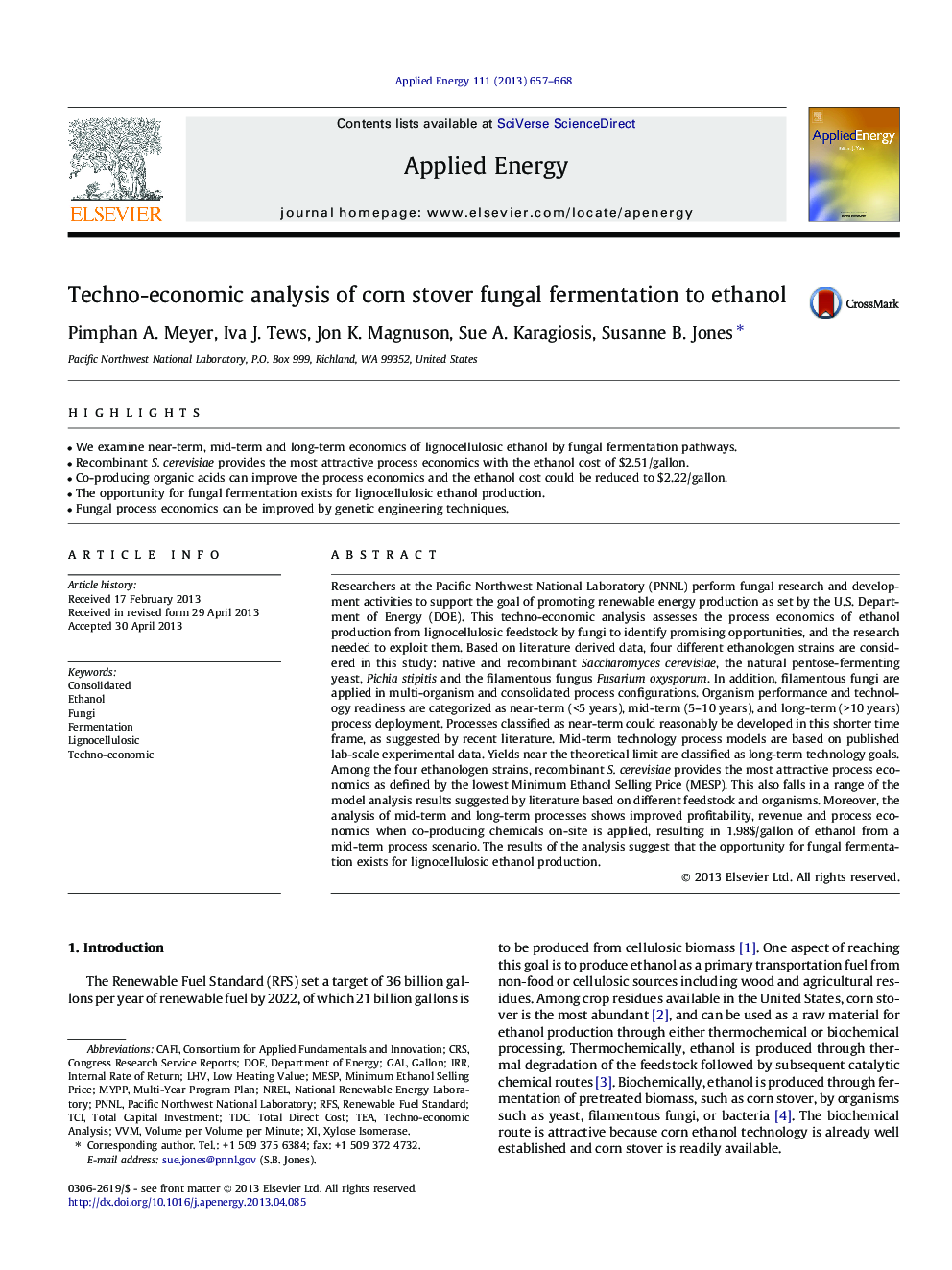| کد مقاله | کد نشریه | سال انتشار | مقاله انگلیسی | نسخه تمام متن |
|---|---|---|---|---|
| 6692464 | 501914 | 2013 | 12 صفحه PDF | دانلود رایگان |
عنوان انگلیسی مقاله ISI
Techno-economic analysis of corn stover fungal fermentation to ethanol
ترجمه فارسی عنوان
تجزیه و تحلیل تکنیکی و اقتصادی از تخمیر قارچ ذرت به اتانول
دانلود مقاله + سفارش ترجمه
دانلود مقاله ISI انگلیسی
رایگان برای ایرانیان
کلمات کلیدی
DOENRELMinimum ethanol selling priceMESPPNNLTCIIRRCRSRFSLHVTDCvvm - VVMXylose isomerase - Xylose IsomeraseNational Renewable Energy Laboratory - آزمایشگاه ملی انرژی تجدید پذیرPacific Northwest National Laboratory - آزمایشگاه ملی شمال غربی اقیانوس آرامEthanol - اتانولRenewable Fuel Standard - استاندارد سوخت قابل بازیافتTechno-economic analysis - تجزیه و تحلیل تکنولوژیکی و اقتصادیFermentation - تخمیر Techno-economic - تکنولوژیکی اقتصادیTotal capital investment - سرمایه کل سرمایه گذاریFungi - قارچLignocellulosic - لیگنوسلولزLow heating value - مقدار گرما کمInternal rate of return - نرخ بازده داخلیDepartment of Energy - وزارت انرژیTEA - چایGal - گال
موضوعات مرتبط
مهندسی و علوم پایه
مهندسی انرژی
مهندسی انرژی و فناوری های برق
چکیده انگلیسی
Researchers at the Pacific Northwest National Laboratory (PNNL) perform fungal research and development activities to support the goal of promoting renewable energy production as set by the U.S. Department of Energy (DOE). This techno-economic analysis assesses the process economics of ethanol production from lignocellulosic feedstock by fungi to identify promising opportunities, and the research needed to exploit them. Based on literature derived data, four different ethanologen strains are considered in this study: native and recombinant Saccharomyces cerevisiae, the natural pentose-fermenting yeast, Pichia stipitis and the filamentous fungus Fusarium oxysporum. In addition, filamentous fungi are applied in multi-organism and consolidated process configurations. Organism performance and technology readiness are categorized as near-term (<5Â years), mid-term (5-10Â years), and long-term (>10Â years) process deployment. Processes classified as near-term could reasonably be developed in this shorter time frame, as suggested by recent literature. Mid-term technology process models are based on published lab-scale experimental data. Yields near the theoretical limit are classified as long-term technology goals. Among the four ethanologen strains, recombinant S. cerevisiae provides the most attractive process economics as defined by the lowest Minimum Ethanol Selling Price (MESP). This also falls in a range of the model analysis results suggested by literature based on different feedstock and organisms. Moreover, the analysis of mid-term and long-term processes shows improved profitability, revenue and process economics when co-producing chemicals on-site is applied, resulting in 1.98$/gallon of ethanol from a mid-term process scenario. The results of the analysis suggest that the opportunity for fungal fermentation exists for lignocellulosic ethanol production.
ناشر
Database: Elsevier - ScienceDirect (ساینس دایرکت)
Journal: Applied Energy - Volume 111, November 2013, Pages 657-668
Journal: Applied Energy - Volume 111, November 2013, Pages 657-668
نویسندگان
Pimphan A. Meyer, Iva J. Tews, Jon K. Magnuson, Sue A. Karagiosis, Susanne B. Jones,
